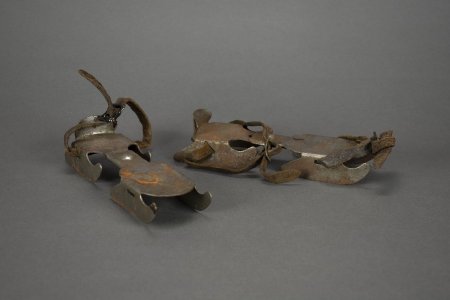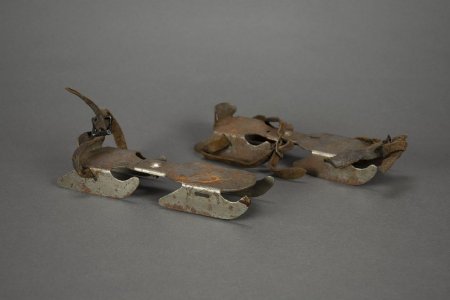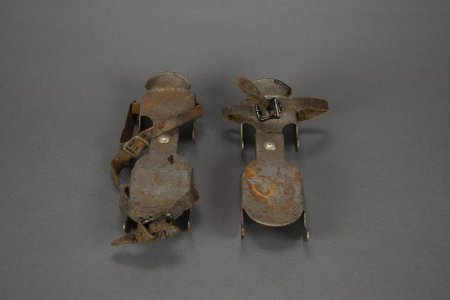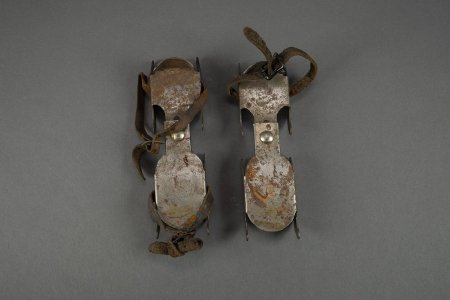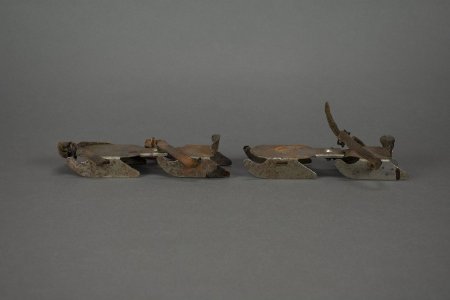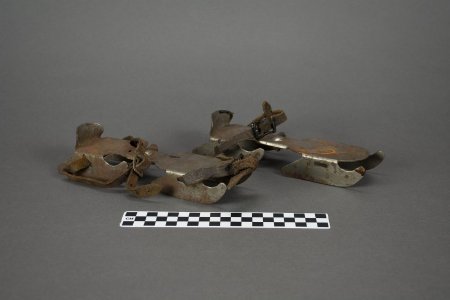Description:
Historians generally agree that ice skating originated in ancient Europe around 5,000 years ago. The earliest skates were made of animal bone and were attached to footwear for improved winter travel. Wooden, and later metal, shoe attachments were used when ice skating became a sport. Double blade skates, also known as bob skates and "cheese cutters" have been used since the early 1900s to help teach young children how to ice skate. The double blades are designed to increase stability and help a beginning skater learn to balance and build confidence on the ice. This month's featured artifacts are a pair of bob skates found in the attic of the historic J.R. Heckman house, located on Knob Hill.
Made by Hove, in Connecticut, each bob skate measures approximately 6 inches long with an extended length of 8 inches in the foot plate. The strap-on attachments for bob skates were traditionally made of metal with leather straps, like the ones featured here, rather than the hard plastic and synthetics of modern skates. One of the greatest attractions for winter fun in the 1900s was ice skating at one of the many local lakes. Due to the higher elevation, Harriet Hunt Lake tends to freeze solid making it a popular destination for winter sports. Ward Lake is also a popular spot for ice skating and hockey.
Ketchikan Museums, KM 2010.2.16.1 A&B

